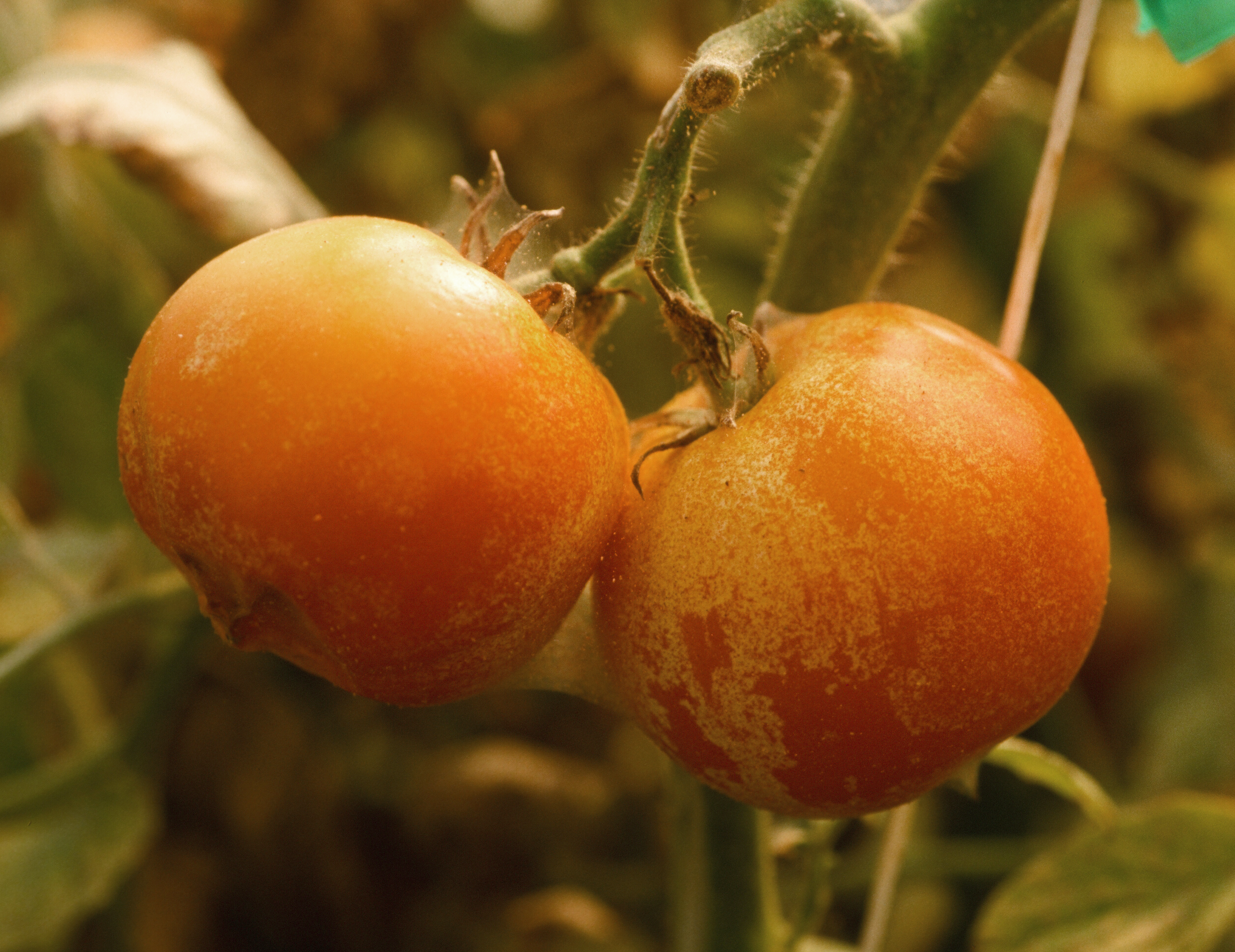Two-Spotted Sider Mite
Return to Insect & Other Arthropod Pests
Two-spotted spider mite (Tetranychus urticae) is the most common mite occurring on greenhouse and high tunnel vegetable crops; it will feed on hundreds of plant species, particularly during hot, dry conditions. Adult mites are less than 1 mm in size and can vary from light green to straw-colored; a large dark spot is present on each side of the body. Eggs are clear and spherical. Spider mites cause stippling (tiny light-colored spots) on leaves and fruit as they feed with their piercing-sucking mouthparts. Webbing between plant structures may be noticeable when populations are large.
Two-spotted spider mite.
(Photo: Ric Bessin, University of Kentucky)

Stippling damage to leaf from two-spotted spider mite.
(Photo: Ric Bessin, University of Kentucky)

Stippling damage to fruit from two-spotted spider mite.
(Photo: Ric Bessin, University of Kentucky)
Webbing on severely damaged leaves from two-spotted spider mite.
(Photo: Kenneth Seebold, University of Kentucky)
Management:
- Release predaceous mites for biological control or apply foliar miticides.
Biological control:
- Two species of predatory mites (Phytoseiulus persimilis and Amblyseius fallacis) have been shown to be very effective for two-spotted spider mites.
